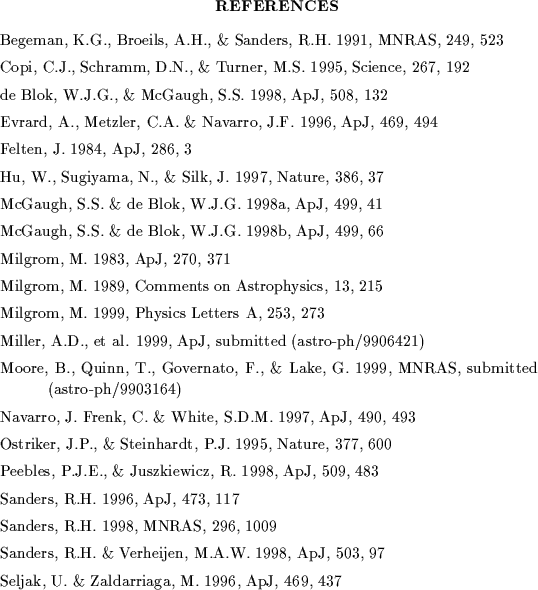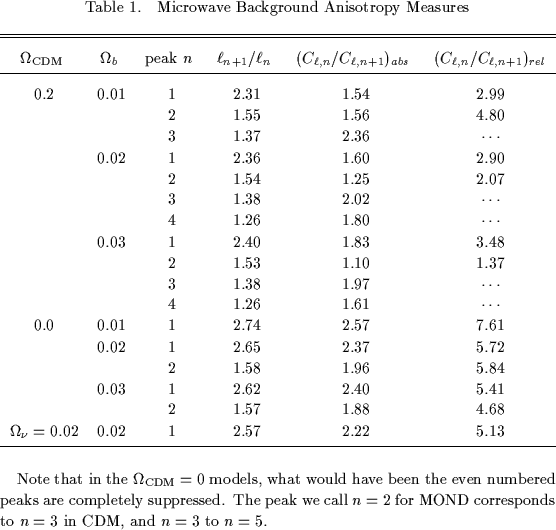Modern cosmological models require copious amounts of nonbaryonic cold dark matter for well established reasons. Yet the existence of CDM has yet to be confirmed. The alternative to dark matter postulated by MilgromM83 (1983), MOND, has long had considerable success in describing the rotation curves of spiral galaxies (Begeman et al. 1991BBS; SandersS96 1996; Sanders & VerheijenSV 1998), a fact which has no explanation in the standard framework. Moreover, MOND successfully predicted, a priori, the behavior of low surface brightness galaxies (McGaugh & de Blok 1998bMBb; de Blok & McGaugh 1998BM), a test which CDM models fail (McGaugh & de Blok 1998aMBa; Moore et al.MQGL 1999). Yet MOND has no clear cosmology.
In this paper, I have attempted to make some predictions for the temperature
anisotropies in the microwave background which might potentially discriminate
between CDM and MOND dominated cosmologies. In this context,
the essential difference between the two is the baryon fraction
(![]() for CDM and fb =1 for MOND).
I have used this fact to examine the differences expected for microwave
background observations in as conservative and model independent a
way as possible.
for CDM and fb =1 for MOND).
I have used this fact to examine the differences expected for microwave
background observations in as conservative and model independent a
way as possible.
Upcoming experiments to measure the anisotropies of the microwave background
to high precision should be able to distinguish between CDM and MOND.
For the simple assumptions investigated here,
the observational signatures are surprisingly subtle, requiring
high accuracy (i.e., peak position or amplitude to ![]() at
at ![]() .)
Perhaps the most promising test is the ratio of peak-to-trough
amplitudes of the first two peaks, with
.)
Perhaps the most promising test is the ratio of peak-to-trough
amplitudes of the first two peaks, with
![]() in plausible CDM models and
in plausible CDM models and
![]() in MOND.
in MOND.
These predictions are offered in the hope of clearly distinguishing between CDM and MOND in the near future.

